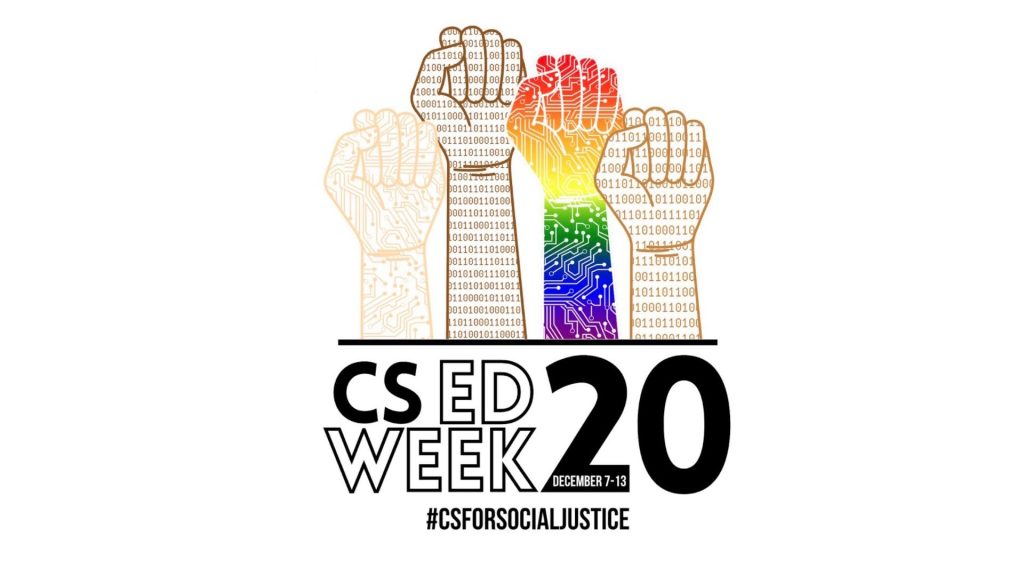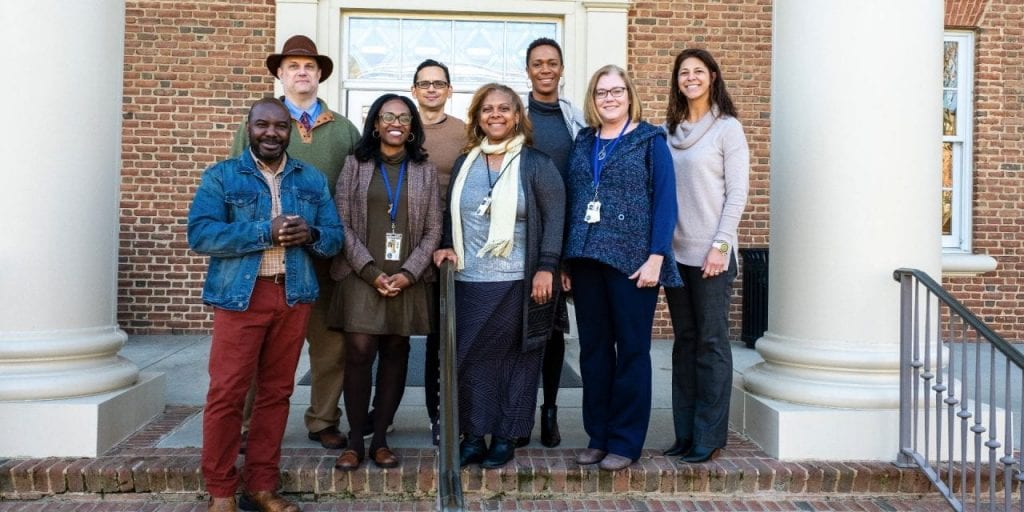Community engagement through experiential, service, or entrepreneurial learning is a cornerstone of every Charger’s learning journey—a crucial component of our signature “own your learning” formula. Beyond just getting students out of the classroom, it offers our students transformative, authentic, hands-on opportunities to pursue their personal passions, engage with the world, and lean into leadership opportunities. The results? Expanded worldviews, widened horizons of possibility, more nuanced perspectives, and a whole bunch of students well-positioned to make the differences they want to see in the world.
That’s because community engagement dividends are not limited to the initial experience. The discoveries that students make about the world and themselves and the skills they acquire pay off long into the future—and often not just for a single student.
When impassioned students enthusiastically bring those experiences home—to their classrooms, their clubs, their teams, and their friends—they become mentors and teachers to their peers and knowledgeable, empathetic, and capable resources for our community. And that’s powerful and impacting stuff—and it is why our Center for Community Engagement is mission critical.
Our CCE has four divisions: diversity, equity, and inclusion; entrepreneurship; service; and experiential learning. These intersect to create a hands-on learning ecosystem that puts students squarely in control and plants the seeds of empathy and action that are nurtured and cultivated into leadership opportunities—many of which act in service to our broader community.
Leadership Academy
Whether it is on the athletics fields, in student clubs and affinity groups, during community engagement opportunities, student-initiated X Days, Discovery Term sessions, or independent studies, Cary Academy prides itself on putting students in the driver’s seat—on giving them ample time, resources, and opportunities to shape their own learning journeys. But, once at the helm, how do we equip students with the requisite skills to make the most of every opportunity? To take calculated risks? Bring ideas to fruition? Collaborate effectively? Motivate peers and make a meaningful impact in our community?
The Center for Community Engagement’s Leadership Academy is an eight-month, intensive program designed to prepare students for leadership roles on and off campus. In monthly sessions, participants—selected for their diverse skills, learning styles, and backgrounds—explore leadership across multiple dimensions, perspectives, and hands-on experiences. A cross-grade-level cohort structure (the program is for students in grade eight to 10) lends itself to robust peer learning, mentoring, and community-building opportunities.
“Learning at Cary Academy has always been relevant, experiential, and highly personalized,” shares Tami Polge, CCE Advisory Board member, CA parent, and program coordinator for the first two cohorts of Leadership Academy. “Students are entrusted with many leadership opportunities but often acquire essential skills—how to effectively communicate and collaborate with others, how to organize a project, how to inspire a group—on the fly. Leadership Academy gives students an opportunity to learn and practice crucial leadership skills so they can hit the ground running and make the most of the opportunities that come their way.”
Over the course of the year, participants might hear from a panel of local community members who embody a variety of leadership roles—from the athletic field to the boardroom to the activist community and beyond. Or engage in team-building field trips like escape rooms and ropes courses or exercises designed to improve collaboration and communication skills. Or take a deep dive into specific leadership challenges such as how to motivate and empower a team or the importance of wellness and self-care for leaders.
At the heart of the program is a desire to upset narrow stereotypes and create a shared community understanding of what leadership is—and isn’t.
(RE)Defining Leadership
“Leaders are made, not born,” offers Danielle Johnson-Webb, Director of Equity and Community Engagement, who helped to found the program. “They come in many different forms; we’re very intentional in showcasing that diversity in the speakers and mentors who work with our students, many of whom have had unconventional journeys to leadership. Whether students are hearing from a female rabbi, a Division 1 athlete, or a now-successful doctor who was initially rejected from medical school, we underscore that leadership doesn’t look one way; it isn’t practiced one way.”
It’s a validating approach for many students, particularly those who may not have felt comfortable embodying leadership roles prior. “Before Leadership Academy, I was worried about overstepping or even leading people that might be older than me,” reflects Danica McCarron, ‘26, who participated in the program as an eighth grader. “I learned that leadership isn’t about a title; you don’t need an official leadership role to be a leader. Now, I know how I can use my skills to help people.”
That is music to the ears of Johnson-Webb. “From the most introverted student to the most outgoing, everyone on this campus has leadership potential; their leadership styles may simply differ,” shares Johnson-Webb. We want to empower all students with the skills to recognize and tap into their innate leadership potential on their own terms—to realize they are qualified, that they deserve to be leaders in their spaces.”
To that end, at the outset, all Leadership Academy students engage in a professional leadership assessment, to discover their own leadership style. Then, through a variety of exercises and experiences, they observe and reflect on how different leadership styles unfold in a team dynamic. In doing so, they learn how to leverage their strengths effectively, while also creating awareness around potential weaknesses that may call for collaboration or other forms of mitigation.
“I think some of my biggest takeaways hinged on figuring out my leadership style,” offers Tanya Sachdev, ’24. “I learned that I take a very active role in leadership. While some of my peers might lead by vocal motivation, I lead by quiet example—by taking responsibility, being diligent, staying organized, and managing details.”
“We want students to understand that leadership is a collective social process—working as a team for a shared vision,” explains Polge. “It’s about relationships and how we connect with and care for others. How we embody our values and conduct ourselves, as well as how we inspire and empower others.”
It is a message that is echoed by nearly all Leadership Academy participants as they reflect on their biggest learning takeaway. “In Leadership Academy, I learned a lot about how to work in a team—about when to step forward and when to step back,” shares Rayan Almony, ‘26. “A good leader isn’t about being the only voice in the room; it’s about empowering the people who might not speak up that much and making sure everyone’s voice is heard.
Leading by example
While Leadership Academy aims to cultivate a community of student leaders who are equipped to help lead on-campus activities and coach and mentor their Cary Academy peers, the intended impact extends beyond our campus.
“Our young people are so capable,” shares Johnson-Webb. “For me, the power of Leadership Academy is not only what it does on our campus—in the cultivation of a community of student leaders—but in the larger community. I love when we can validate and empower young people to go out in the world and effectively position themselves appropriately as experts—to do work that is important and impactful to them.”
Already the students of Leadership Academy are making waves beyond CA’s campus community. Last year, Sachdev and McCarron co-led two high-profile leadership workshops—one with a group of adult educators during the CA-hosted ISEEN conference, and later for a peer group of students at the Triangle Diversity Alliance—to rave reviews. In both, Sachdev and McCarron led their participants through exercises they had undertaken during Leadership Academy to reveal leadership best practices. In addition, they taught participants replicable activities they could take back to their own communities to cultivate student leadership skills on their respective campuses.
Coming full circle
For Sachdev and McCarron, the transformation from student to leader was a full circle moment that brought home the powerful lessons gleaned over the course of the year. “I’ve learned so much about how leadership plays a role in every facet of daily life. Teamwork, collaboration, unity towards a common goal—these are elements of leadership necessary not only for teams, but for life in general,” shares McCarron. “By presenting at these conferences, I was able to understand even more about my leadership style and how to teach others about leadership.”
“It was in those moments—when I was presenting at ISEEN and Triangle Diversity Alliance—that I realized how Leadership Academy can impact people beyond myself, and even beyond students at Cary Academy,” adds Sachdev. “What we learned about leadership can benefit everyone. And to be able to share those skills, to see our participants’ light-up moments in person? It was just a great experience.”











